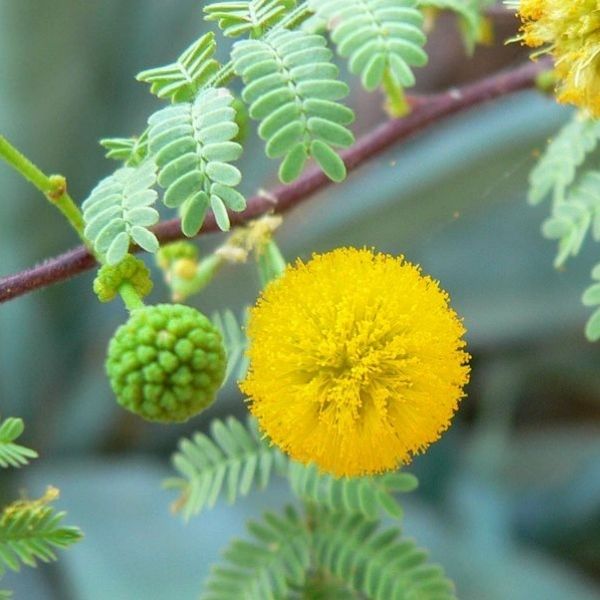Acacia arabica, commonly known as Babul or Indian gum Arabic tree, is a species of tree native to the Indian subcontinent. It belongs to the Fabaceae family and is known for its multiple uses and medicinal properties
Morphology: Acacia arabica is a medium-sized deciduous tree that can reach a height of about 15-20 meters. It has a dense, spreading crown with thorny branches. The bark is grayish-brown and rough, while the leaves are bipinnately compound, with small leaflets.
Medicinal Uses: Various parts of Acacia arabica have been used in traditional medicine for their therapeutic properties. The bark and gum of the tree contain tannins, flavonoids, and other compounds that possess antimicrobial, anti-inflammatory, and antioxidant properties. In Ayurvedic medicine, Acacia arabica is used for treating diarrhea, dysentery, sore throat, gum problems, and skin disorders.
Gum Arabic: Acacia arabica produces a type of gum known as gum Arabic. The gum is harvested by making incisions in the bark, allowing the sap to ooze out and dry. Gum Arabic is widely used in the food industry as a thickening and stabilizing agent in confectionery, beverages, and processed foods. It is also used in the pharmaceutical industry as a binder and emulsifier in tablet formulations.
Livestock Feed: The leaves and pods of Acacia arabica are used as fodder for livestock due to their high nutritional value. They provide a good source of protein, fiber, and minerals for cattle, goats, and sheep.
Soil Improvement: Acacia arabica is known for its nitrogen-fixing ability. The tree forms a symbiotic relationship with nitrogen-fixing bacteria in its roots, which convert atmospheric nitrogen into a form that can be used by plants. This helps improve soil fertility and enhances the growth of neighboring plants.
Environmental Benefits: Acacia arabica plays a vital role in ecological restoration and afforestation efforts. It is often planted in degraded lands, as it can tolerate harsh conditions and help prevent soil erosion. The tree provides shade, habitat, and food for various bird species, insects, and other wildlife.
Wood and Timber: The wood of Acacia arabica is hard, durable, and termite-resistant. It is used for construction, furniture, agricultural implements, and fuelwood. The tree also yields charcoal, which is used for cooking and industrial purposes.
Acacia arabica is a versatile tree with multiple uses and benefits. Its medicinal properties, gum Arabic production, and environmental contributions make it a valuable species in various industries and for sustainable land management practices.
